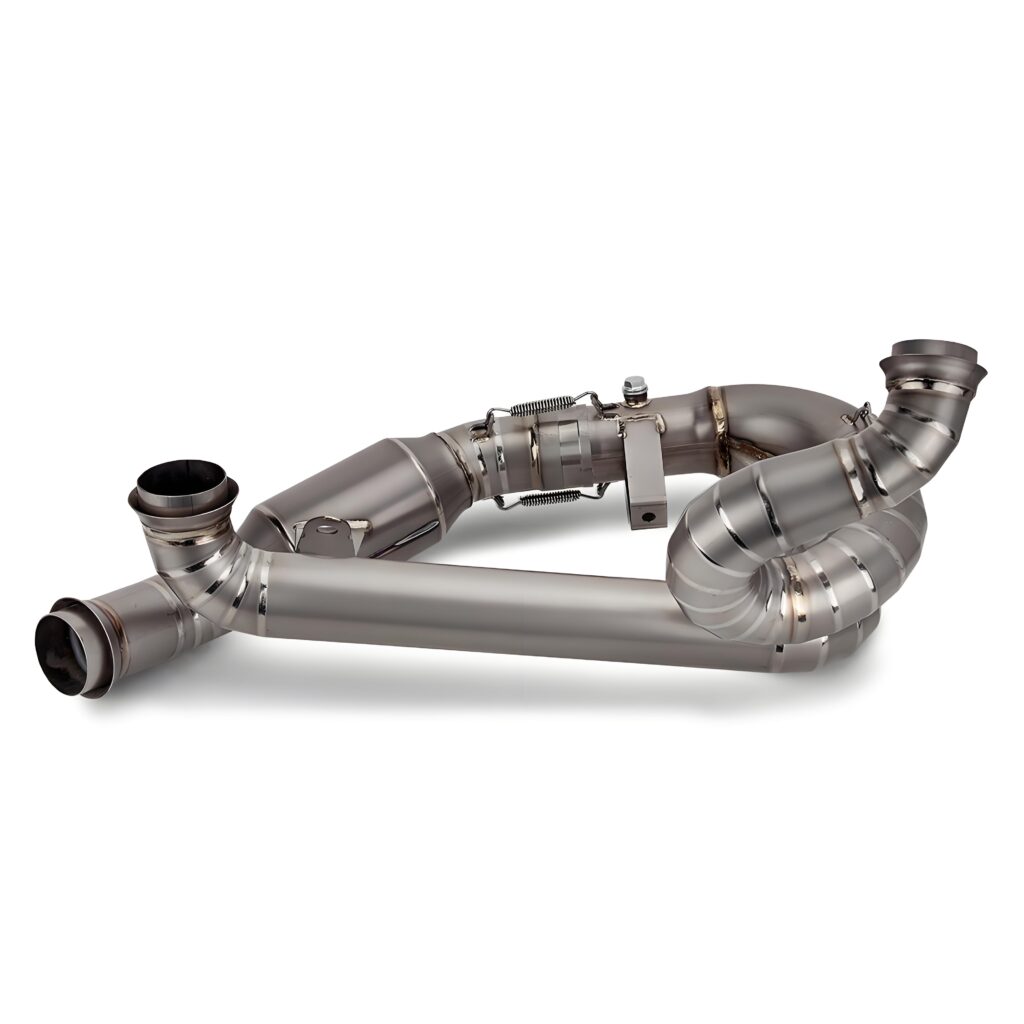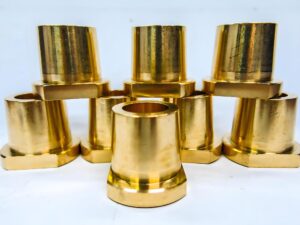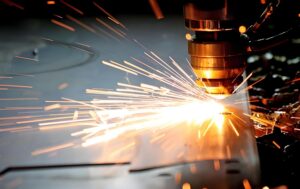Titanium is revered for its strength, lightness, and corrosion resistance, but one of its most critical traits—often overlooked—is its high melting point. This thermal property dictates how titanium performs in extreme heat, shapes manufacturing processes, and determines its suitability for high-stakes industries like aerospace and energy.
In this guide, we’ll break down titanium’s melting point, why it’s so high, how alloys affect it, and why it’s a make-or-break factor for key applications.
What Is Titanium’s Melting Point?
The melting point of a metal is the temperature at which it transitions from a solid to a liquid. For pure titanium, this temperature is 1,668°C (3,034°F).
To put this in context:
- It’s far higher than aluminum (660°C/1,220°F) or magnesium (650°C/1,202°F), making titanium far more heat-resistant.
- It’s lower than refractory metals like tungsten (3,422°C/6,192°F) or molybdenum (2,623°C/4,753°F) but still high enough for most industrial needs.
This balance—strong heat resistance without the brittleness of ultra-high-melting metals—makes titanium uniquely versatile.
Why Does Titanium’s Melting Point Matter?
A material’s melting point isn’t just a number; it defines its limits and possibilities. For titanium, this high threshold unlocks three key advantages:
Thermal Stability in Extreme Environments
Titanium retains its strength and shape even at temperatures approaching its melting point. This makes it indispensable in industries where heat is a constant challenge:
Aerospace: Jet engine components (turbine blades, exhausts) face temperatures up to 600–800°C during flight—well below titanium’s melting point, ensuring they don’t warp or fail.
Industrial Furnaces: Titanium parts in high-temperature manufacturing (e.g., glass production) resist softening or deformation.
Nuclear Energy: Titanium’s stability under heat makes it suitable for reactor components exposed to radiation and elevated temperatures.
Precision in Manufacturing
For machining, welding, or casting titanium, knowing its melting point is critical to avoiding mistakes:
Welding: Titanium requires high heat to fuse, but exceeding safe thresholds (below 1,668°C) can cause grain growth, weakening the metal.
Casting: Molten titanium (above 1,668°C) must be handled in vacuum or inert gas environments to prevent contamination—precision in temperature control is key.
Heat Treatment: Processes like annealing (strengthening via controlled heating) rely on staying below the melting point to avoid melting or distortion.
Durability in Long-Term Use
Materials with high melting points generally resist “creep” (slow deformation under sustained heat and stress). Titanium’s high melting point ensures:
Engine Parts: Turbochargers or exhaust systems in cars and planes won’t sag or crack over time, even with repeated heating and cooling.
Medical Implants: Titanium can withstand high-temperature sterilization (autoclaving at 134°C/273°F) without degrading, ensuring longevity in the body.
Why Does Titanium Have Such a High Melting Point?
Titanium’s ability to withstand extreme heat stems from its atomic structure and bonding. Here’s the science:
Strong Metallic Bonds
Titanium atoms are held together by strong metallic bonds, which require massive energy to break. These bonds form because titanium has a high atomic number (22) and tightly packed electrons, creating a strong attraction between atoms.
Stable Crystal Structure
At room temperature, titanium has a hexagonal close-packed (hcp) crystal structure, where atoms are arranged in dense, tightly bonded layers. This structure is inherently stable and resists breaking apart even when heated.
At 882°C (1,620°F), titanium transitions to a body-centered cubic (bcc) structure, but this shift doesn’t weaken its heat resistance—both forms remain stable until the melting point.
High Interatomic Forces
Titanium’s electron configuration (3d² 4s²) results in strong interatomic forces. These forces resist the vibrations that cause atoms to break free (and the metal to melt) at high temperatures.
What Affects Titanium’s Melting Point?
While pure titanium has a fixed melting point, titanium alloys can have higher or lower thresholds, depending on their composition. Here are the key factors:
Alloying Elements
Adding other metals to titanium changes its melting point. Most alloys lower it slightly, but the trade-off (enhanced strength or corrosion resistance) is often worth it:
| Alloy | Composition | Melting Point | Use Case |
| Pure Titanium | 99.5% Ti | 1,668°C (3,034°F) | Chemical processing |
| Grade 5 (Ti-6Al-4V) | 90% Ti, 6% Al, 4% V | 1,649–1,660°C | Aerospace, medical implants |
| Ti-6Al-2Sn-4Zr-2Mo | Ti + Al, Sn, Zr, Mo | ~1,600°C | High-temperature engine parts |
Purity
Impurities (e.g., oxygen, iron, carbon) can lower titanium’s melting point. For example:
- Titanium with 0.1% oxygen may melt at 1,660°C (slightly lower than pure titanium).
- Industrial-grade titanium (with small impurities) still retains a melting point above 1,650°C—high enough for most applications.
Pressure
Extreme pressure (e.g., deep-sea environments or space) can slightly raise titanium’s melting point. Under high pressure, atoms are forced closer together, strengthening bonds and requiring more heat to break them. This is relevant for:
- Deep-sea submersibles (titanium hulls under extreme water pressure).
- Rocket components (exposed to atmospheric pressure changes during launch).
Applications: Where Titanium’s Melting Point Shines

Titanium’s high melting point, combined with its other properties (strength, corrosion resistance), makes it irreplaceable in these industries:
Aerospace & Aviation
- Jet Engines: Turbine blades, combustion chambers, and exhaust nozzles rely on titanium’s heat resistance to withstand 600–1,000°C temperatures.
- Spacecraft: Heat shields for reentry vehicles (temperatures up to 1,200°C) use titanium to avoid melting during atmospheric entry.
Automotive
- High-Performance Vehicles: Titanium exhaust systems handle 800–900°C exhaust gases without rusting or warping, outlasting steel.
- Turbochargers: Titanium components resist the intense heat of compressed air, improving engine efficiency.
Chemical Processing
- Reactors & Pipes: Titanium equipment in chemical plants handles high-temperature acids (e.g., sulfuric acid at 200°C) without corroding or melting.
- Heat Exchangers: Titanium tubes transfer heat between fluids at 300–500°C, maintaining structural integrity.
Medical
- Sterilization: Titanium implants (hip replacements, dental screws) survive autoclaving (134°C) repeatedly without degrading.
- Surgical Tools: Titanium scalpels and forceps withstand high-temperature sterilization, ensuring they remain sharp and durable.
Conclusion: Titanium’s Thermal Advantage
Titanium’s melting point—1,668°C—isn’t just a statistic; it’s the foundation of its performance in extreme environments. From jet engines to medical implants, this property ensures titanium can handle heat, pressure, and wear where other metals fail.
At Precionn, we specialize in machining titanium and its alloys with precision, leveraging our understanding of thermal properties to create parts that meet the strictest industry standards. Whether you need high-temperature aerospace components or corrosion-resistant chemical processing equipment, we’ll deliver titanium solutions tailored to your needs.
Contact us today to discuss how titanium’s unique properties can elevate your project.




